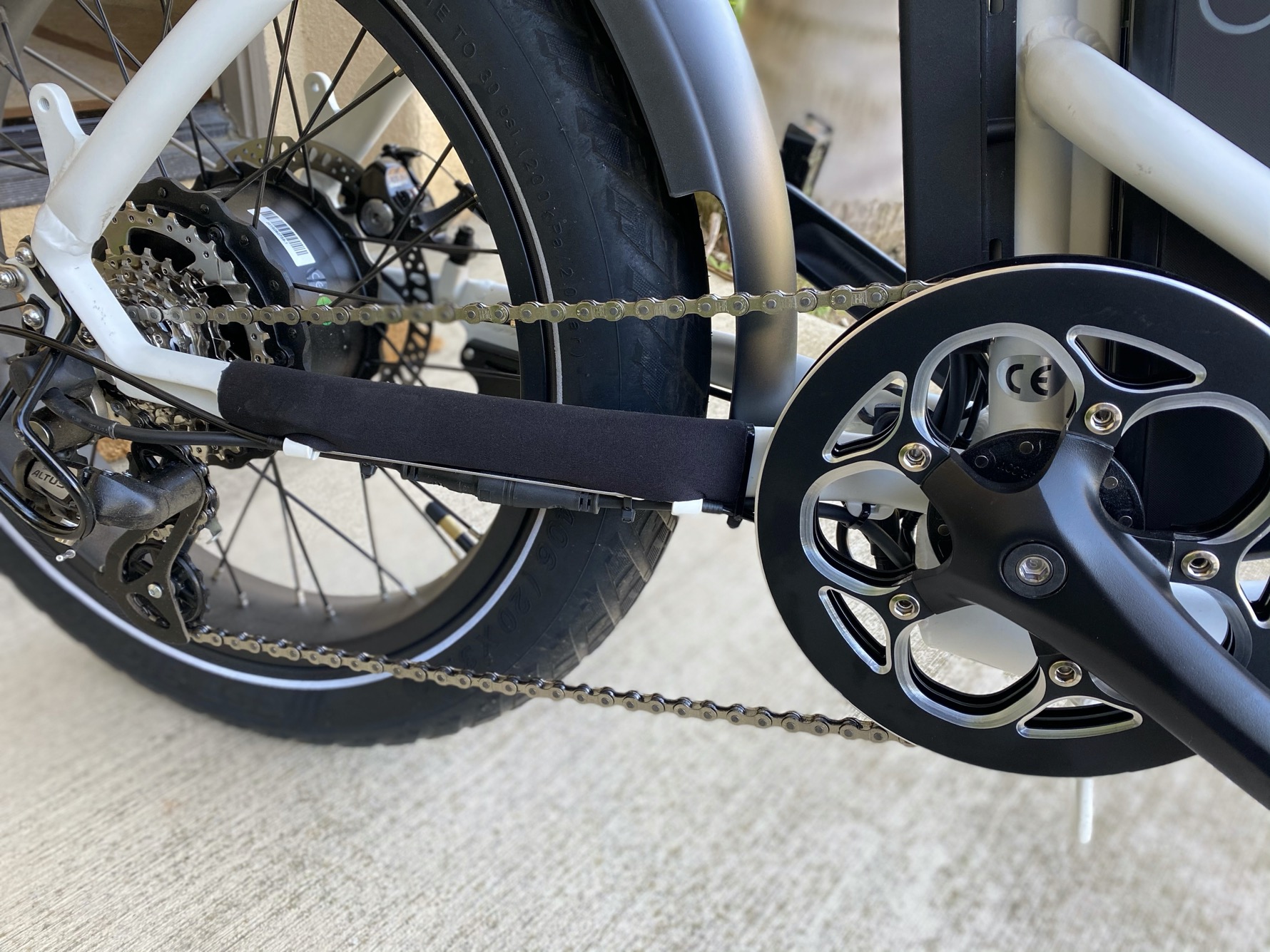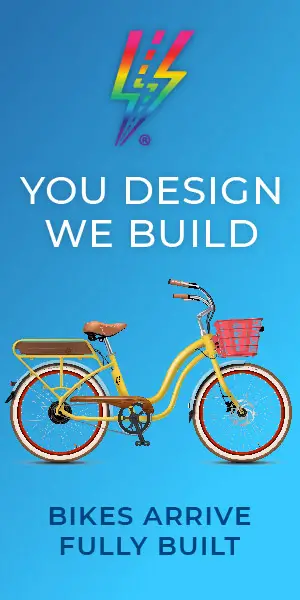Learning why, when, and how to use the gears on electric bikes can be a little tricky if you’re a beginning e-bike rider. This might cause you to avoid shifting gears altogether, instead relying only on electric pedal assistance. However, this will limit battery life and put more strain on the brakes, among other concerns.
On an e-bike, there are two sets of gears to shift. On the left handlebar, increase or decrease the level of electric pedal assistance you receive by pushing the buttons up or down. On the right handlebar, use the gear shift to move the mechanical gears higher or lower.
Typically, shifting is done with your thumb or fingers. Continue pedaling while shifting gears.
But, don’t avoid using the gears if you’re not sure how to or don’t think they’re needed since you’re riding an electric bike. There are quite a few benefits to using both the left-side (pedal assist) and right-side gears. Beginning e-bike riders can learn how to shift efficiently after just a couple of rides.
Continue reading below to discover many more tips on how to use your gears (like for riding uphill or downhill).
Does an E-Bike Need Gears? The Benefits
As you can see in the table below, there are more (and greater) benefits to using gears than not.
| Benefits of Using Gears | Benefits of Having an E-Bike Without Gears |
| Easier to ride uphill | Less maintenance needed |
| Faster to ride uphill | More simplistic riding (less to learn!) |
| Easier to control speed going downhill | Decreased cost of maintenance |
| Preservation of battery charge (& life of the battery) | |
| Decrease wear and tear on brakes | |
| Don’t need as powerful of a motor | |
| Help you get a great workout | |
| Help you keep a consistent cadence and speed |
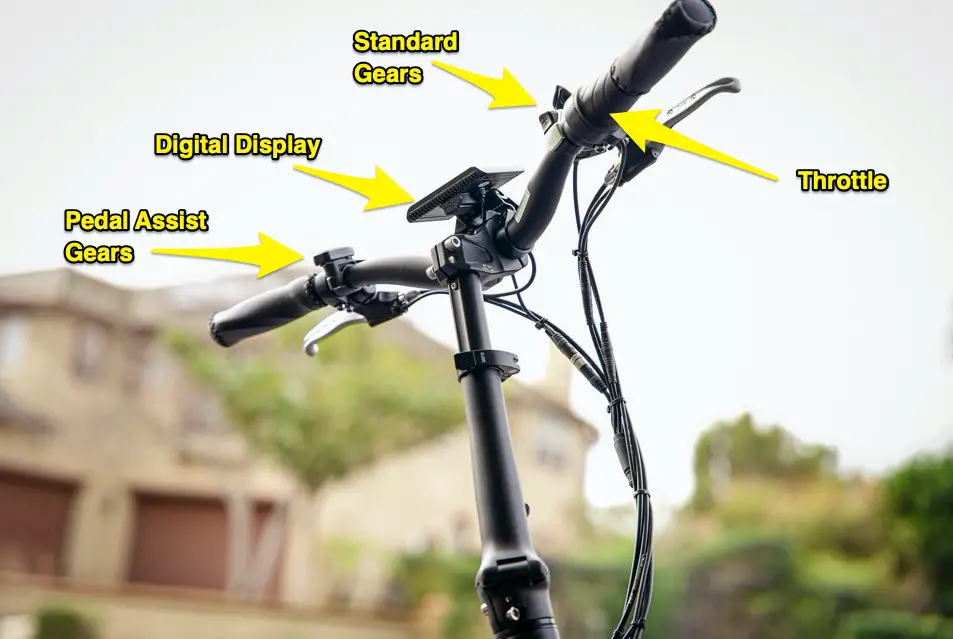
Benefits of Using Gears
Most e-bikes (and their riders) need gears, even if using them with pedal assist and a throttle. Shifting gears regularly will make it easier to ride uphill, keep you from going too fast downhill, and save your brake pads and battery from wear and tear.
Another great thing about gears is that you can keep your pedal assist level low while using the gears. When I started riding, I increased the pedal assist to level 3 or 4 when riding up a hill. However, I depleted my battery charge quickly by riding this way. But, I learned to save a lot of wear and tear on my e-bike by using the gear shifts.
You’ll also need gears if you don’t have a powerful enough motor to get you up hills easily. So if you have a 250 Watt motor (as opposed to a 500 Watt or even 750 Watt motor), you might not have enough juice to get you up a hill in a reasonable amount of time.
Further, even riding up a small but steady incline will use up your battery charge quickly, so you won’t be able to ride as far. Of course, you can use a lower pedal assist level to preserve your battery, but you might struggle to get up the hill.
Here’s another thing to love about having gears… If your battery runs out of charge, switching to a low gear will help you pedal home, even without motor assistance. Further, if you want to preserve your battery or give yourself more of a challenge, you can turn off the battery power and ride home in lower gear.
Reasons You Don’t Need Gears
However, it’s interesting to note that some electric bikes, either by choice or because they’re less expensive models, may not have mechanical gears that shift. These e-bike models often have a belt-drive system, which has many benefits. Watch this electric bike review to see a quiet, lightweight belt-drive e-bike and its advantages:
There are a few benefits to having an e-bike without gears. A good reason for not having gears on an electric bike is that you intend to cruise. Or you plan to rely on the motor and/or throttle to propel you forward when you need help.
If you intend to ride for leisure and avoid climbing steep hills, then it might make sense to buy an e-bike without gears. Your ride will be simple, you’ll save money on maintenance, and you may save money on an e-bike.
Find out more about riding with only a throttle or pedal assistance:
How To Ride an E-bike Without PEdaling
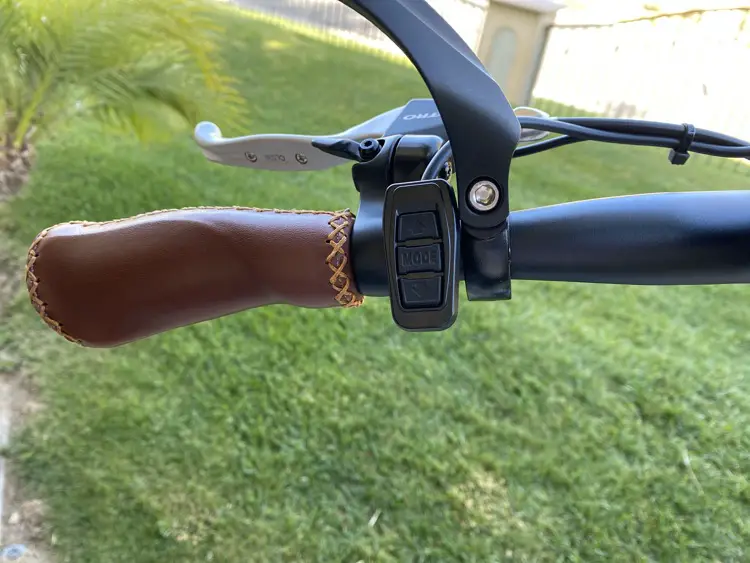
What is the Best Way to Use Gears on an E-Bike?
Learning how to shift gears isn’t just about where to find them on your e-bike or how to make them work. In truth, I didn’t use my gears for nearly a month after I bought my e-bike. I didn’t think I needed them and wasn’t sure how to use them. But once I figured out how to use the gears, I understood the advantage of doing so.
Using the gears will become natural for you with practice and a few tips.
1. The very first thing you need to know is the gear numbering system: The lower the gear number, the easier you can pedal and the faster you can ride.
Likewise, the higher the gear number, the less electronic assistance you’ll get. The tricky thing to keep in mind is that, if you shift into the highest number gear, then you’ll basically have no assistance from the gears themselves.
Although this isn’t very intuitive, you’ll be able to get used to it within a few rides as I did. What helped me was to just keep my gears in the highest position (7 on my e-bike) unless I needed more assistance. As a beginner e-bike rider, this is a great way to start getting used to both your electrical and mechanical gears.
2. Next, you need to learn how to move the type of gear on your ebike.
Find out what kind of gears you have and how they shift. Generally, there are two types of gears that are predominant on electric bikes: Trigger Gears and Gripshift Gears. The first is typically a small paddle that you push once with your thumb each time you shift into another gear. The latter is a dial that you rotate forward and back with your whole hand to shift gears.
Both of these should be located on the right-side handlebar. Check your instruction manual from the manufacturer if you’re not sure what you’re looking at.
3. Now your goal should be to learn how to shift gears smoothly and efficiently.
Since you want to move smoothly from one gear to another without clunking and failing to get into one gear, then you should do two things:
First, only change the gears on your right while you are pedaling.
Second, only shift up or down one gear at a time. This will ensure that the chain moves consistently up or down one gear at a time. And it’ll help you find the best gear for you at the moment.
Your goal is to ride with a regular cadence (your pedaling makes a full rotation at the same speed each time) and consistent effort.
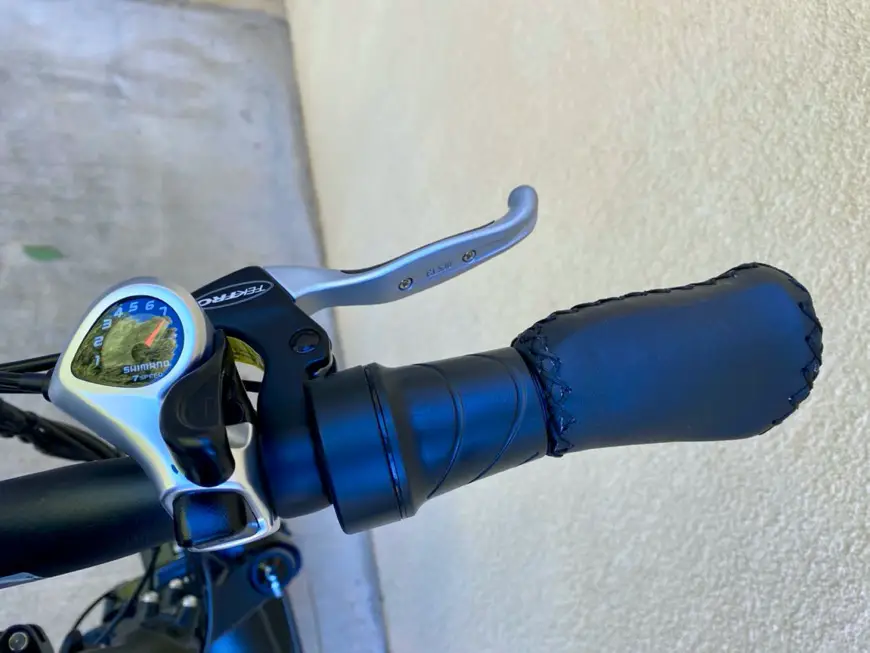
How to Use the Gears on an Electric Bike for Climbing Hills: Downshifting
On an e-bike, it’s easy to assume that you can get up a hill easily by just engaging the motor. Just push a button and move up another pedal assist level right? Now, as a beginner e-bike rider, you’re going to use your battery a lot, if. for no other reason than it’s so much fun.
However, there are benefits to downshifting, especially when riding up a hill. Just keep in mind that “downshifting” on an electric bike means that you are going to lower numbers but making it easier to ride than when using the higher-numbered gears.
Advantages of Downshifting
By shifting the right-hand gears down, you’ll find that getting up a hill becomes more manageable without the use of more motor power. So you can save your battery charge for later when you’re tired and on your way home. Downshifting also becomes helpful when you’re riding a longer, sustained incline.
Here’s when you really get to practice your shifting techniques… plan your shifting in advance, especially if it’s a steep grade. On long, consistent climbs, find a gear that lets you spin quickly but comfortably all the way up.
So, you shouldn’t need to constantly shift gears when going uphill. Instead, just find the gear where you can pedal consistently at a level that’s comfortable for the entire climb. Of course, if the incline suddenly gets steeper, you can shift down another gear to stay consistent without increasing your pedal assist level. Once again, this is an opportunity to preserve your battery charge as well as the life of the battery.
Another benefit to downshifting is that you can get fantastic exercise by finding just the right gear mixed with the perfect pedal assist level to climb a hill. If exercise is a primary goal for you when riding, then riding up hills is a great option.
You’ll probably end up down the road only using the lower pedal assist levels while shifting into lower gears to keep your cadence and a smooth uphill ride. Although you might not believe this when you begin riding an e-bike, it’ll be possible sooner than you think.
What I love about riding an electric bike is that you’re much more likely to challenge yourself when you know that you can simply shift gears to make it easier when you absolutely need to!
Read this article to find out more about exercising on an e-bike:
Do You Get Exercise on an E-Bike?
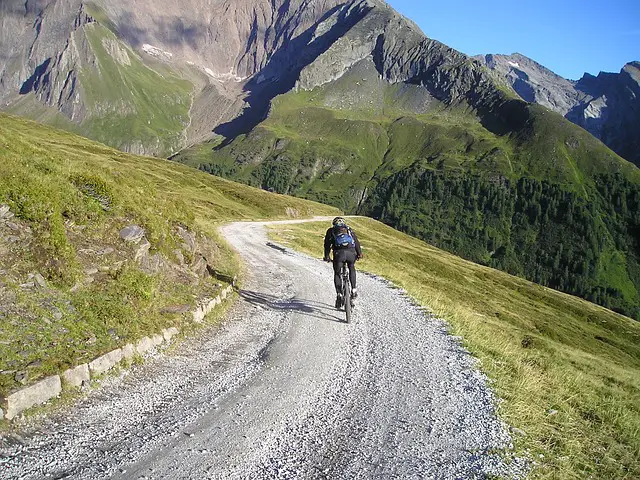
How to Shift the Gears Going Down a Hill: Upshifting
Riding up a hill can actually seem so much easier than going down a hill, thanks to downshifting. But let’s look at why “upshifting” might be done when going downhill on an e-bike.
Okay, if you love speed, you might never consider trying to go slower down a hill, even a steep one. But, for most of us, self-preservation will take over and we’ll want to brake. The problem with braking all the way down a hill is that it’ll wear out your brakes quite quickly and you could actually throw yourself off of the bike if you brake too hard and too suddenly.
Advantages of Upshifting
This is why upshifting is useful and safer as well, especially on a heavier electric bike. When riding downhill at a 5 or 10% decline you might be fine staying in whatever gear you’re already in, especially if it’s a short decline. However, at a 15% or 20% decline, shifting into the highest gear (which is also the hardest or “slowest” of gears) will keep your speed a little more steady and make you feel more in control.
I ride up many hills but like to stay slower and in control when going downhill.
Here’s an example of how I do it: My e-bike has 7 gear shifts. On any substantial decline at all, I keep my bike in the 7th, or hardest, gear. I combine this with actually turning off my left pedal assist gears (level 0) and find that I have more control riding downhill and that I don’t have to brake quite as much or as hard.
Of course, on steep declines, I still use the brake quite a bit. You can learn more about calculating how steep an incline or decline is here.
The fact is, on a heavy e-bike, you’ll get moving pretty quickly if you stay in lower gear. This is because the mass of the bike will move you faster than on a standard bike.
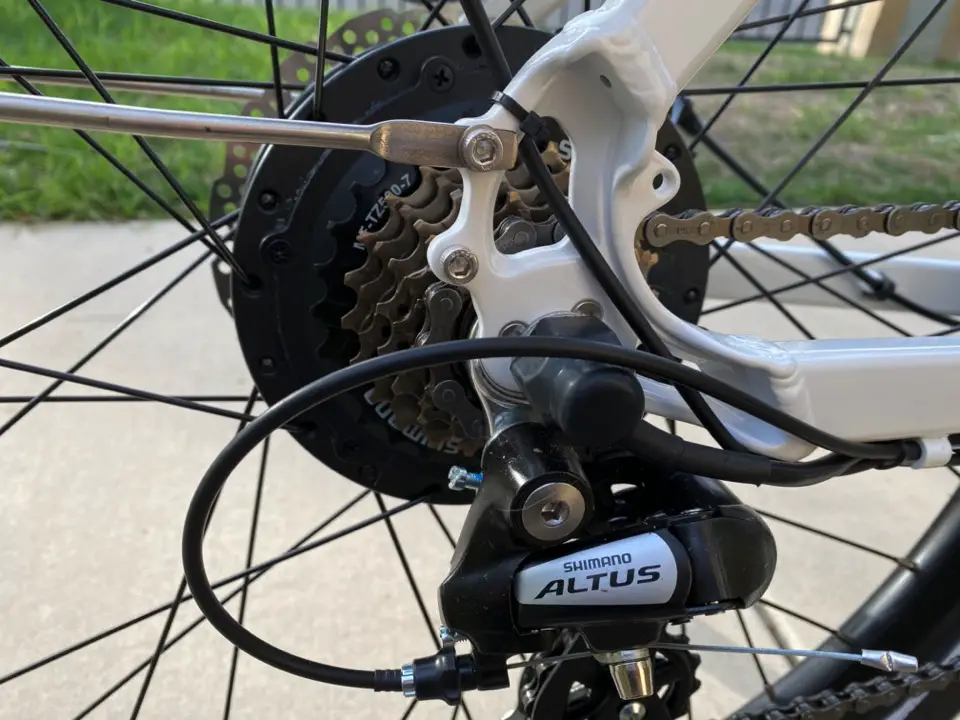
5 Step-By-Step Tips for Using Your E-Bike Gears
Follow these steps for shifting to get a feel for your gears and to learn how to shift them efficiently. Practicing shifting before going on a major ride is a good idea for any beginner e-bike rider, even if you have practice changing gears on a standard bike. After all, e-bikes have the additional component of motor power to deal with and are typically quite a bit heavier and faster.
Tip #1- Practice Using Gears on a Flat Surface
Practice pedaling on a relatively flat straight-away and then continuing to pedal while shifting up or down one gear with the right side shifters. Continue to pedal throughout the gear change. Change gears up and down a number of times, but only one at a time.
Tip #2- Ride at a Consistent Speed in Each Gear
Now practice riding with a consistent cadence. After each gear change, get a feel for the change in the pressure of your pedal. Notice how it makes it harder or easier, or slower or faster, to pedal. Practice keeping your pedaling speed the same as you move forward and continue to change gears.
Tip #3- Practice Using Left-Side Pedal Assist Gears
Now switch back to the hardest gear so you can safely practice changing the left, pedal assist gears. This is where you’ll pick up speed fast. So, keeping your e-bike in the highest right-hand gear will allow you more control when you’re just beginning.
You should be starting at the lowest level of pedal assist. So, once you’re headed on a straight path (and away from cars and other moving objects), push the pedal assist button to level 2. Continue pedaling at a consistent rhythm while you carefully increase the pedal assist level. Get accustomed to each speed before you go to the next level.
Tip #4- Shift Lower to Go Uphill
Once you’re comfortable with gear shifting on a flat surface, then try going uphill. Plan ahead for the hill by shifting into an easier (lower) gear just before you hit the incline. Then as you start to move uphill, continue to shift to a lower gear as needed.
When you start to struggle even a little, change your left-side pedal assist gear to the next level up. Continue increasing the levels as needed to successfully get up the hill.
Tip #5- Upshift to Go Downhill
Now you’re ready to ride downhill. Shift your right-hand gear to its highest (hardest) level well in advance of going down a hill. By planning ahead, you can slow down the bike considerably before descending.
Then, change your left-hand pedal assist gear to its lowest level of assistance (level one) just before you start to go down a small incline. If you’ll be going down a steep hill, shift the gear to “0” or the “off” position. You won’t get any motor assistance to propel you forward and this will give you more control of the speed of your e-bike.
However, because you’re no longer getting any motor assistance, you might not want to shift to level zero too soon or you’ll have a harder time continuing to pedal before going downhill. But, once you’re on your way down a steep hill, you won’t need any pedal assistance.
Want more info on Using an E-bike?
How to Use an Electric Bike: Step by Step Instructions for Beginners
Conclusion: Using E-Bike Gears Increases Enjoyment
Whether you’re a beginning bike rider, or just new to riding electric bikes, learning how to shift gears on your e-bike will help you ride more comfortably and efficiently. Not only will you have an easier time tackling hills and riding longer distances, but you’ll also preserve the battery’s charge and battery life. Further, you’ll protect the brakes from unusual wear and tear.
Shifting efficiently will also improve the quality of exercise you can get on an e-bike and the control you have over your speed and cadence.
To learn more about riding an e-bike for beginners, read this:
Is It Easy to Ride an Electric Bike: 12 Riding Tips for Beginners

